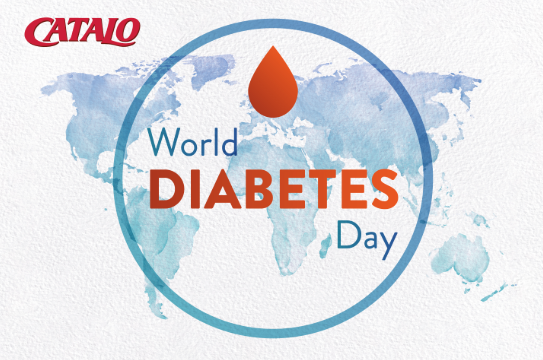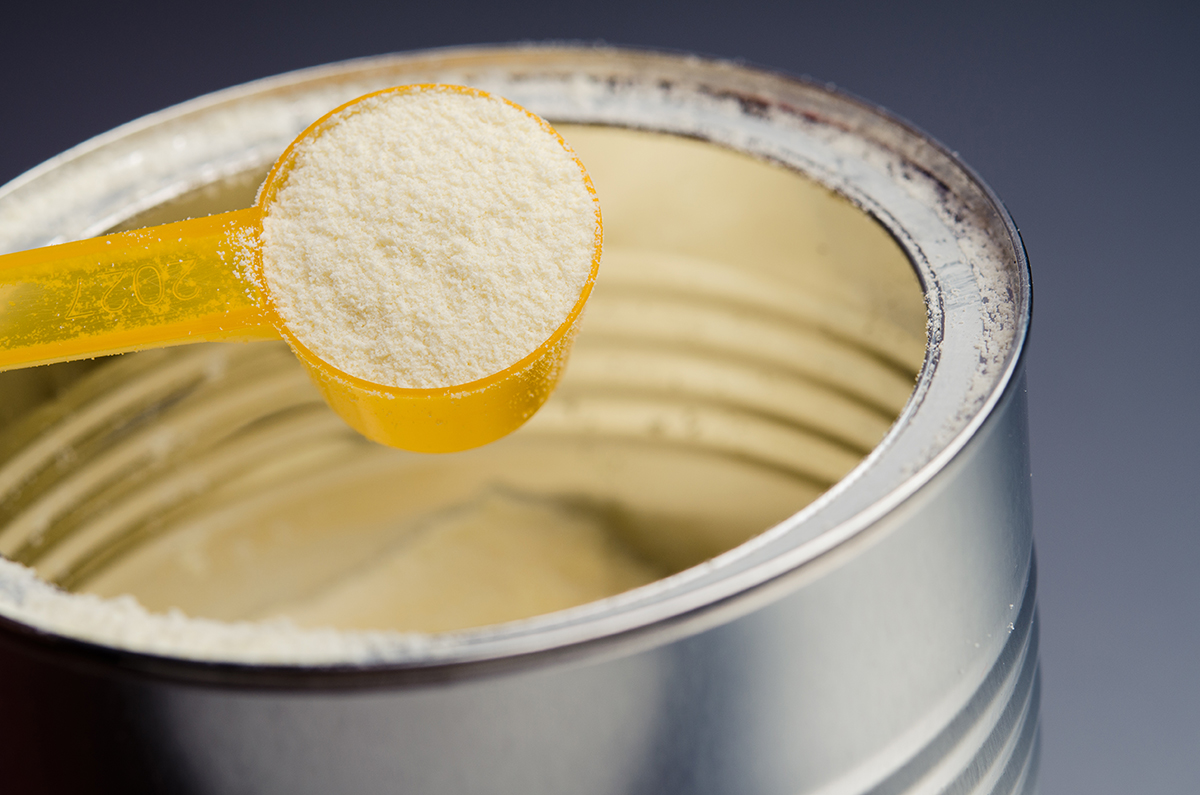World Diabetes Day

World Diabetes Day
World Diabetes Day started in 1991 by the World Health Organization and the International Diabetes Federation. It is marked every year on 14th of November in response to raising the awareness, treatment, and control of diabetes. Currently, there are 537 million people with diabetes mellitus globally which is 1 in 10 adults (20-79 years) and the expected number will rise to 784 million by 2045 according to the International Diabetes Federation[1]. Although there is no cure to diabetes mellitus, it can be prevented when you care about it. Let’s take the initiative to help everyone else to combat diabetes
[1] Diabetes Global IDF Diabetes Atlas 10th edition. (2021). World Diabetes Day (14th of November)
Diabetes
Diabetes mellitus is a chronic disorder characterised into three main types: Type 1 diabetes which is insulin-dependent is common in children and adolescents. It is caused when your pancreas unable to produce insulin for glucose metabolism, in result of blood sugar elevation. Regular treatment of insulin injection and appropriate diet control can help alleviate the seriousness of diabetic symptoms.
Type 2 diabetes is insulin independent, with your body not responding to insulin effectively and hence leading to a rise in blood sugar level. It is common in adults and the contributing factors may include being overweight and lack of exercise. Complications of type 2 diabetes will generally develop over time, including increased tiredness, wound bleeding, poor vision, feeling thirsty or hungry. Having poorly controlled blood sugar level may further develop other life-threatening complications such as heart and nerve damage. Normally, patients require regular medication, diet control and exercise to minimize the development of severe diabetes complications.
Gestational diabetes is a temporary condition typically developed during the 24th to 28th weeks of pregnancy. It is usually caused by hormonal changes or inability of body to produce enough insulin. If the diagnosed pregnant women are not treated, high blood sugar may cause problems for pregnant woman and the baby throughout the pregnancy period. Therefore, it is important to monitor blood sugar level before and during pregnancy, so that the associated symptoms can go away after giving birth.
Diabetes Myths and Facts
Myth 1: People with diabetes should avoid sugar intake
Reducing sugar intake is indeed the first step to control blood sugar levels. Yet, this may not be practical to totally avoid sugar in diet because diabetic patients may get hypoglycemia (low blood sugar) easily when they do not have enough sugar to use as fuel. For low blood sugar condition, people may have symptoms like headache, heart palpitation, nausea, dizziness and shaking, vary depending on the severity level. Therefore, sugar intake is still very important for diabetic patients.
Myth 2: Ladyfinger water is effective on treating diabetes
Some findings reported that ladyfinger water contains high dietary fiber to keep you fuller for longer and hence manage your blood sugar level. In fact, only little amount of dietary fiber can be released into water and drinking ladyfinger water alone isn’t sufficient for managing diabetes. Moreover, we can easily find foods that are rich in dietary fiber, including fruits, vegetables, whole-grains, seeds and nuts and there is no conclusive medical research that proves ladyfinger water is truly safe to drink persistently. Therefore, you should consult your doctor on diabetes treatment instead of relying on natural foods and drinks.
Myth 3: People with normal weight will less likely develop diabetes
Since type 1 diabetes is caused by autoimmune reaction, infection and mutated genes, weight is not a risk factor for type 1 diabetes. But it is true that obesity and overweight increase chances of having type 2 diabetes because insulin resistance would be deteriorated when associated with raised body weight and/or body fat. However, normal weight people who adopt poor diet (high sugar and fat diet) and inadequate physical activity would still be classified as high-risk group as excessive sugar and fat in body can further weaken your immune system and reduce insulin sensitivity whatever your body shape is. Hence, everyone should avoid high sugar intake to maintain good health.
Tips to Manage Blood Sugar Levels
- Keep Track of Your Blood Sugar Levels
Regular blood sugar monitoring is the most important thing to prevent diabetes. It is suggested over aged 40 and high-risk people to track the blood sugar levels regularly. You can either visit health centre or use your own blood sugar meter to measure the blood glucose level. Your target ranges of blood sugar levels should be around 4-5.6mmol/L before meal, 4-7.8mmol/L after meal (2hours after meal) and hemoglobin A1c level (HbA1c) less than 5.7% (performed at medical lab). Once you find any of the indicators exceed the normal ranges, you should consult with doctor for further check-up or any appropriate medication arrangement. Below is the blood sugar levels in diagnosing diabetes (Figure 1).
Figure 1:Blood sugar levels in diagnosing diabetes
|
|
Blood Glucose Level (mmol/L) |
HbA1c (%) |
|
|
Fasting State |
2 hours After Meal |
||
|
Normal |
<5.6 |
<7.8 |
<5.7 |
|
Pre-diabetic |
5.6-6.9 |
7.8-11.0 |
5.7-6.4 |
|
Diabetic |
Greater than or = 7 |
Greater than or =11 |
Greater than or = 6.5 |
Reference:Asia Diabetes Foundation
2.Pay Attention to Food Choices
Controlling diet is the key to stabilize your blood sugar levels, especially for pregnant women and overweight people. The World Health Organization (WHO) recommends a maximum intake of free sugars of less than 5% of total energy intake for adults and children. That is about 25g (5 teaspoons of sugar) at a calorie intake of 2000kcal per day[1]. “Free sugars” is defined as sugars include monosaccharides and disaccharides added to foods and beverages by the manufacturer, cook or consumer, and sugars naturally present in honey, syrups, fruit juices and fruit juice concentrates[2]. If you are at high risk of diabetes, you should avoid foods and drinks that are abundant in free sugar (refer to Figure 2), to keep your blood sugar levels within normal ranges.
Figure 2: Sugar Contents of beverages and foods
[WHO recommended sugar intake level; 1 egg tart (70g), ~10.5g; 1 piece of cheesecake (126g), ~24g; 1 cup of Frappuccino (281ml), ~28g, exceeded 12%; 1 bottle of energy drink (contains mainly glucose) (300ml), ~29g, exceeded 16%; 1 carton of lemon tea (250ml), ~33g, exceeded 32%; 1 can of soft drink (330ml), ~35g, exceeded 40%; sugar (teaspoon)]
Secondly, our body absolutely needs sugar to produce energy, so that we should not avoid it in our diets. Carbohydrates are usually present in a variety of foods including sugars, starches and dietary fiber. Instead of choosing single-sugar or free-sugar, we should better consume carbohydrates that are polysaccharides (e.g. dietary fibers) or low glycemic index (GI), for example, whole-grains, sweet corns, pasta, soybean products and vegetables (Refer to Figure 3) are carbohydrates that high in dietary fibers and low in GI. The lower the GI, the longer the time for glucose to raise in blood and help diabetic patients to prolong satiety.
Figure 3: Glycemic Index (GI) of different foods (Glucose = 100 GI)
As long as you develop a healthy dietary practice, choosing the right choices of foods, adopting of small and frequent meal and avoiding high GI foods, you are smartly maintaining a stable blood sugar level and preventing the development of diabetes.Reference: China Food Ingredient List
3. Make Exercise a Habit
Doing regular exercise is essential to regulate blood glucose level as it is associated with significant improvements in glucose metabolism and insulin sensitivity. A finding reported the combination of aerobic exercise and resistance training is more effective on maintaining hemoglobin A1C (HbA1C) values in patients with type 2 diabetes compared with either type of exercise alone[1]. Develop a routine in doing aerobic exercise, such as brisk-walking, jogging, swimming, cycling, playing ball games and dancing for 30 minutes and 3-5 days a week, may help regulate blood glucose and improve cardio-pulmonary function in general. In addition, finding 1-3 days a week that work on all major muscle groups by doing weight (or water bottles) lifting, shoulder pulley, resistance band training and squats in 15-20 reps for 3-4 times would be great for strengthening your bones and muscles.
Reference:
- Diabetes Hong Kong. (2011). World Diabetes Day (14th of November)
- World Health Organization. (2015). Guideline: sugars intake for adults and children
- Centre for Food Safety. (2017). Reduction of Dietary Sodium and Sugar
- Sigal, R.J. et al. (2007). Effects of aerobic training, resistance training, or both on glycemic control in type 2 diabetes: a randomized trial. Ann Intern Med, 147(6):357-369
[1] Sigal, R.J. et al. (2007). Effects of aerobic training, resistance training, or both on glycemic control in type 2 diabetes: a randomized trial. Ann Intern Med, 147(6):357-369




